
Shirak is a province of Armenia. It is located in the north-west of the country, bordering the provinces of Lori to the east and Aragatsotn to the south and southeast, and the countries of Turkey to the west and Georgia to the north. Its capital and largest city is Gyumri, which is the second largest city in Armenia. It is as much semi-desert as it is mountain meadow or high alpine. In the south, the high steppes merge into mountain terrain, being verdant green in the spring, with hues of reddish brown in the summer. The province is served by the Shirak International Airport of Gyumri.
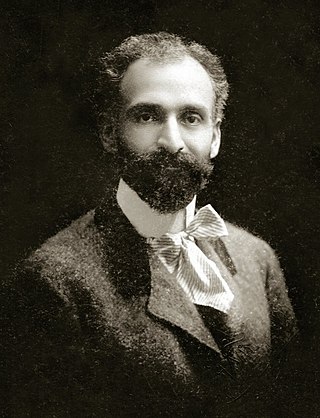
Hovhannes Tumanyan was an Armenian poet, writer, translator, and literary and public activist. He is the national poet of Armenia.

Mount Aragats is an isolated four-peaked volcano massif in Armenia. Its northern summit, at 4,090 m (13,420 ft) above sea level, is the highest point of the Lesser Caucasus and Armenia. It is also one of the highest points in the Armenian Highlands.

Gyumri is an urban municipal community and the second-largest city in Armenia, serving as the administrative center of Shirak Province in the northwestern part of the country. By the end of the 19th century, when the city was known as Alexandropol, it became the largest city of Russian-ruled Eastern Armenia with a population above that of Yerevan. The city became renowned as a cultural hub, while also carrying significance as a major center of Russian troops during Russo-Turkish wars of the 19th century.
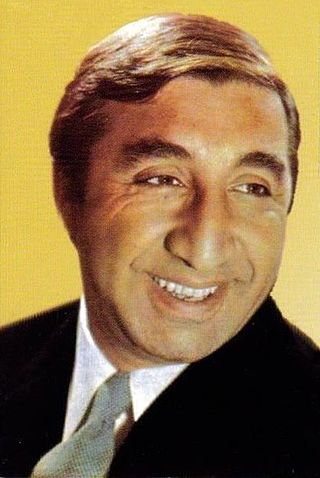
Mher Musheghi Mkrtchyan, better known by the name Frunzik, was an Armenian stage and film actor. Mkrtchyan is widely considered one of the greatest actors of the Soviet period among Armenians and the USSR as a whole. He received the prestigious People's Artist of the USSR award in 1984.
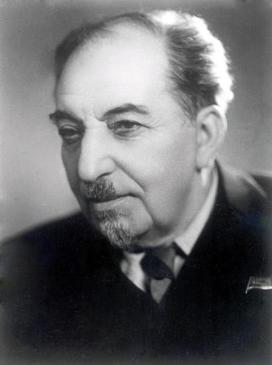
Avetik Sahak Isahakyan was a prominent Armenian lyric poet, writer and public activist.
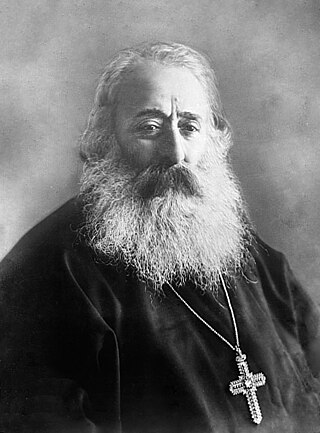
Mkrtich Khrimian was an Armenian Apostolic Church leader, educator, and publisher who served as Catholicos of All Armenians from 1893 to 1907. During this period he was known as Mkrtich I of Van.
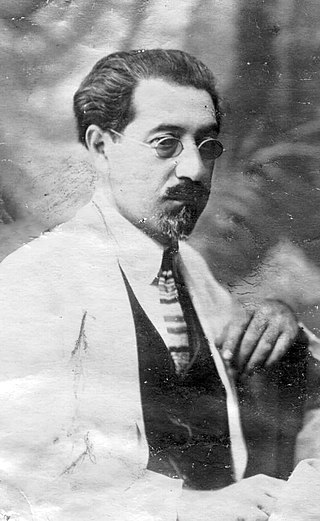
Armen Tigranian or Tigranyan or Dikranian was an Armenian composer, conductor and sociocultural activist. His best-known work is Anoush, premiered in Alexandropol in 1912. It is the first opera ever performed in Armenia.

Geghuni Chitchyan or Chitchian is an Armenian composer, pianist, and pedagogue. Her parents were veteran teachers; her brother, Henrikh, an established violinist.

Nado Khdoi Makhmudov (1907–1990) was a Kurdish writer and public figure of the Soviet Union.
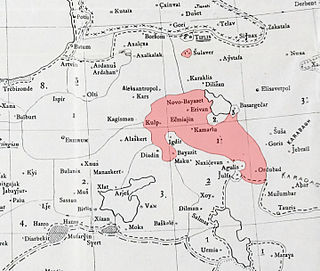
The Yerevan dialect is an Eastern Armenian dialect spoken in and around Yerevan. Classical Armenian (Grabar) words compose significant part of the Yerevan dialect vocabulary. Throughout the history, the dialect was influenced by several languages, especially Russian and Persian and loan words have significant presence in it today. It is the most widespread Armenian dialect today.

The Karin dialect is a Western Armenian dialect originally spoken in and around the city of Erzurum, now located in eastern Turkey.

Poloz Mukuch is a restaurant and prominent beerhouse in Gyumri, the second-largest city in Armenia. It was opened during the 1960s in Soviet Armenia and located in the historic district of Kumayri. It occupies an old mansion built in the 1860s. The beerhouse is named after humorist Mkrtich Melkonyan (1881-1931), a native of Gyumri, better known as Poloz Mukuch.

Yeghishe Charents House Museum, also known as the Yeghishe Charents Memorial Museum, is the house museum in Yerevan, Armenia where the poet Yeghishe Charents lived from 1935 to 1937.
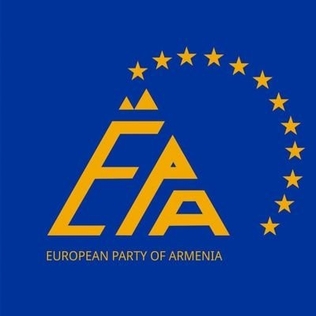
The European Party of Armenia is a pro-European political party in Armenia. It was founded on 6 November 2018 by filmmaker Tigran Khzmalyan.
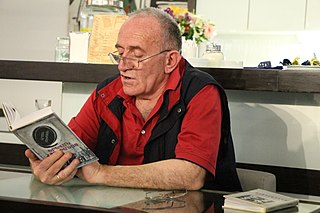
Armen Shekoyan was an Armenian writer, poet and journalist.

The Kumayri historic district, also known as the Kumayri Historical and Cultural Museum-Reserve, is the oldest part of Gyumri with its own unique architecture. It has more than a thousand buildings dating back to the 19th and 20th centuries. The district is one of few places in Armenia, and the world, with authentic urban Armenian architecture. Almost all the structures of the Kumayri district have survived the two major earthquakes in 1926 and 1988 respectively. The historic district of Kumayri occupies the central and western part of modern-day Gyumri.

Pele Pughi was an 18th-century Armenian satirist and fabulist from Karabakh.
Khachik Manukyan is an Armenian poet.























